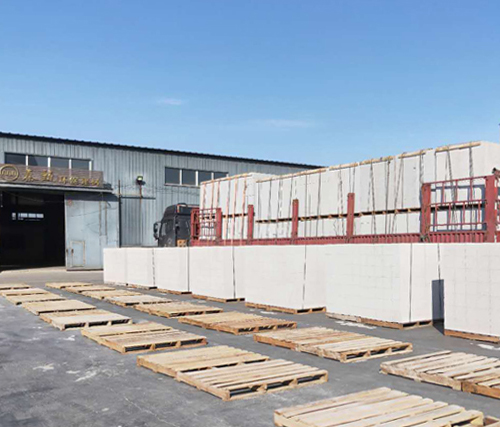Through the observation of the production process of lightweight concrete, the following problems mainly exist in the mixing of lightweight concrete:
1. Mixing of foam and cementitious material
Density: 200~300kg/m ³ For left and right lightweight concrete, the total volume of foam can indeed account for 70%~80% of lightweight concrete, and the density of cement and other cementitious materials is large, but the foam density is very small. The density difference between the two is large. The foam often floats on the aqueous solution of cementitious materials, and the two are not easy to mix together.
2. Segregation of aggregate and slurry,
When making some special lightweight concrete products, it is necessary to add a certain amount of aggregates, such as EPS particles, ceramsite particles, perlite and other materials, into the foamed concrete. These aggregates are small in density, fragile, and difficult to mix with the cement slurry. If they are not evenly mixed with the cement slurry or the amount of them deviates, The aggregate and cement slurry will segregate during the mixing process or the subsequent transportation process, resulting in poor strength of concrete products, or even scrapping.
3. Bubble burst
A key point in the production of lightweight concrete is the proper application of foam. Only rich and delicate foam can make high-quality lightweight concrete. But in actual production, in addition to the quality of foam equipment, the foam will be destroyed by the mixing action when it is mixed with the concrete slurry. Therefore, the time for foam to participate in the mixing must be strictly controlled, If the foam mixing time is short, the foam and slurry are not fully mixed, and the mixing time is long, the foam loss is great, the concrete collapses seriously, and the density of concrete products cannot be guaranteed.
4. Mixing drum wall sticking
Compared with ordinary concrete mixing, lightweight concrete is easier to stick to the wall. There are dead corners between the mixing arm and the mixing drum in the mixing host, light materials are thrown to stick to the wall, the host is not fully discharged, resulting in residual mud caking and other factors. After a period of accumulation, it will be mixed into the mud in the later stage, It is easy to sink and cause the bottom foam to burst, resulting in the collapse of the mold after pouring.
Made by aerated concrete equipment Aerated concrete block The value of strength is relative to a certain water content state, which is called the reference water content. The range of the reference water content of strength varies from country to country. For example, the standard of Germany, the European Community and the United Kingdom requires the reference water content to be (6 ± 2)%. The starting point is that the final water content of the products on the wall is 2% - 8%; In Sweden and other countries, the air drying state of aerated concrete blocks is taken as the benchmark, that is, the moisture content is (10 ± 2)%; However, in China, when the grade of anti pressure bow changes, it is based on the water content in the stable stage of bow lead, that is, 25% - 45%, which is very different from the actual water content in the wall, so it will affect the quality assessment of the compressive strength of aerated concrete.


